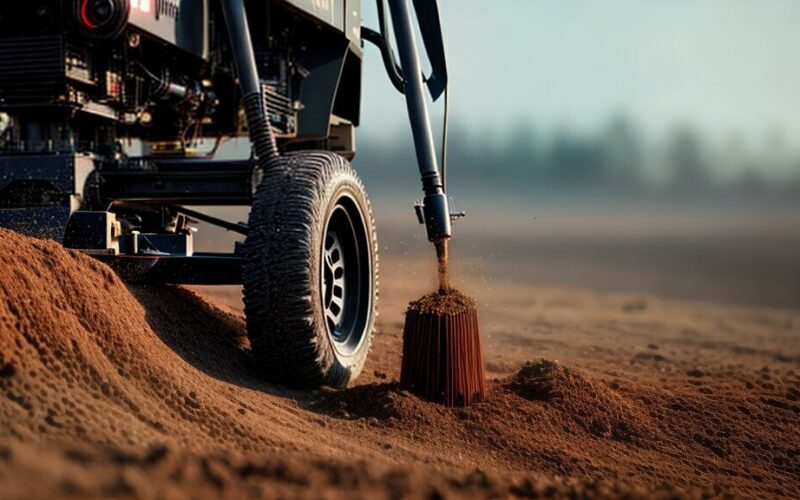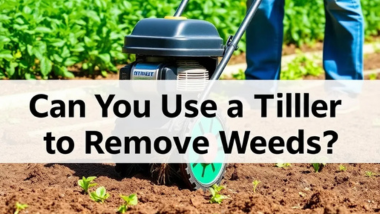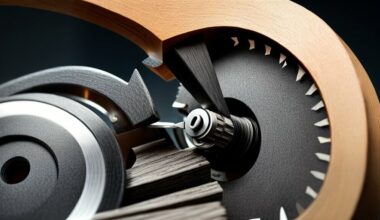Are you planning to start a garden or looking for a more efficient way to prepare your soil? A garden tiller can make the job easier and faster. However, with different types of tillers available in the market, choosing the right one for your garden can be overwhelming.
In this guide, we will provide an overview of front and rear tine tillers and the differences between them. You’ll learn about the benefits and features of each type of tiller and which one is better suited for your gardening needs.
By the end of this guide, you should be able to choose the best option for your garden and achieve optimal results.
Key Takeaways
- Front and rear tine tillers have their own advantages and disadvantages.
- Front tine tillers are more maneuverable and better suited for smaller gardens.
- Rear tine tillers are more powerful and stable and better suited for larger gardens or tougher soil conditions.
- When choosing a tiller, consider factors such as your garden size, soil type, and gardening tasks.
- Proper soil preparation and tilling techniques are crucial for optimal results.
Understanding Front Tine Tillers
Front tine tillers are a popular option for gardeners looking for a lightweight and easy-to-use tiller for their smaller gardens. These tillers are designed with their tines (blades) located at the front of the machine, making them ideal for maneuvering in tight spaces.
Front tine tillers are typically less powerful than rear tine tillers but still powerful enough to break up soil, mix in compost, and prepare garden beds. These tillers are also more affordable than rear tine tillers, making them an attractive option for gardeners on a budget.
Front tine tillers are ideal for those who have smaller gardens and are looking for a machine that is easy to maneuver. They are also a great option for gardeners who are new to tilling and looking for a machine that is easy to use.
If you’re looking for a front tine tiller, be sure to consider the size of your garden and the type of soil you have. A smaller garden with looser soil will require a smaller and less powerful tiller, while a larger garden with tougher soil will require a larger and more powerful tiller.
Exploring Rear Tine Tillers
Rear tine tillers are a type of garden tiller that is designed for larger gardens or tougher gardening tasks. These tillers have their tines located at the back of the machine, making them more powerful and stable than front tine tillers.
If you have a larger garden, or if you need to tackle tougher soil conditions, a rear tine tiller may be the better option for you. These tillers are capable of breaking up hard soil and removing weeds more effectively than front tine tillers. They also tend to be more efficient, allowing you to cover more ground in less time.
| Benefits of Rear Tine Tillers |
|---|
| Rear tine tillers are more powerful and stable. |
| They are better suited for larger gardens or tougher soil conditions. |
| They are more efficient, allowing you to cover more ground in less time. |
When choosing a rear tine tiller, there are a few things to consider. First, think about the size of your garden and the types of gardening tasks you need to perform. You’ll also want to consider the type of soil you have and any specific challenges you may face when tilling your garden.
Keep in mind that rear tine tillers can be more expensive than front tine tillers, so you’ll want to factor in your budget as well. However, if you have a larger garden or tougher soil conditions, investing in a high-quality rear tine tiller can be well worth the cost.
Overall, rear tine tillers are a powerful and efficient tool for any serious gardener. The right tiller can make all the difference in preparing your soil for planting and ensuring that your garden thrives.
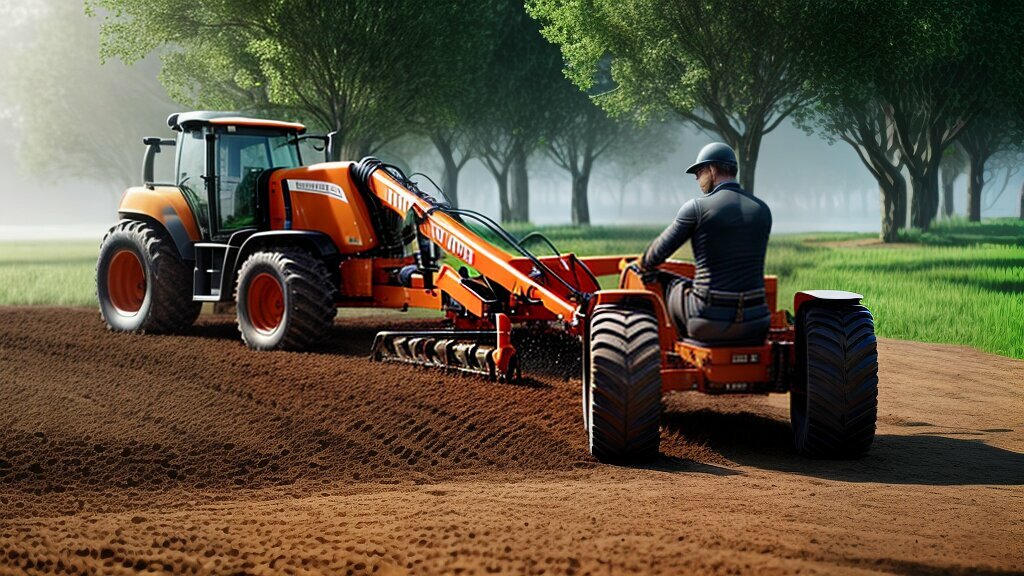
Factors to Consider When Choosing a Tiller
When it comes to choosing the right tiller for your garden, there are several factors you should consider. These factors will help you determine the type of tiller that will be best suited for your specific garden needs, ensuring that you achieve the best results possible.
Garden Size
One of the most important factors to consider when choosing a tiller is the size of your garden. If you have a small garden, a front tine tiller may be sufficient. However, if you have a larger garden or plan to take on more challenging gardening tasks, such as breaking up hard soil, a rear tine tiller may be a better option.
Soil Type
The type of soil you have in your garden is also an important factor to consider. If you have soft, loamy soil, a front tine tiller may be suitable. However, if you have clay or rocky soil, a rear tine tiller with more power and stability may be necessary.
Gardening Tasks
The specific gardening tasks you plan to undertake should also be taken into account. If you need a tiller for basic soil preparation and weeding, a front tine tiller may be sufficient. However, if you plan to undertake more complex tasks such as creating new garden beds or planting large vegetable gardens, a larger and more powerful rear tine tiller may be necessary.
Budget
Finally, your budget is also an important consideration. Front tine tillers tend to be less expensive than rear tine tillers, so if you are on a tight budget, a front tine tiller may be the best option. However, if you can afford to spend a bit more, investing in a high-quality rear tine tiller may be worthwhile in the long run.
By considering these factors when choosing a tiller for your garden, you can ensure that you select the right option for your needs, and achieve the best results possible.

Note: The image above is for illustrative purposes only and does not represent a specific brand or model of garden tiller.
Tilling Techniques for Optimal Results
Using a garden tiller is a great way to prepare your soil for planting, but it’s important to use the right techniques to achieve optimal results. Here are some tips to help you get the most out of your front or rear tine tiller.
Prepare your soil
Before using your tiller, it’s important to prepare your soil properly. Remove any rocks, weeds, or debris from the area you want to till. If your soil is particularly hard or compacted, you may want to consider adding compost or other organic material to help loosen it up. This will make it easier for your tiller to work through the soil effectively.
Choose the right tilling depth
The depth of your tilling will depend on what you’re planting and the type of soil you have. For most gardens, a depth of 4-6 inches is ideal. If you’re working with clay or other heavy soils, you may want to go a little deeper. Be careful not to till too deeply, however, as this can damage your soil structure and make it harder for plants to grow.
Use the right tilling technique
There are different techniques you can use when tilling your garden, depending on your needs. If you’re just preparing a new garden bed, a straight pass with your tiller should be sufficient. If you’re trying to break up hard soil or incorporate organic matter, you may want to use a cross-hatch pattern. This involves making a first pass in one direction, then making another pass perpendicular to the first. Repeat this process until the soil is thoroughly mixed.
Use the right speed
While it can be tempting to go full throttle with your tiller, it’s important to use the right speed for the job. If you’re tilling a small area, you can use a slower speed to be more precise. For larger areas, a faster speed can help you get the job done more quickly. Experiment with different speeds to find what works best for you and your garden.
Invest in a top-rated tiller
Investing in a top-rated tiller can help you achieve the best results in your garden. Look for tillers with features like adjustable tilling depth, easy maneuverability, and powerful engines. Check out reviews from other gardeners to find the best tiller for your needs.
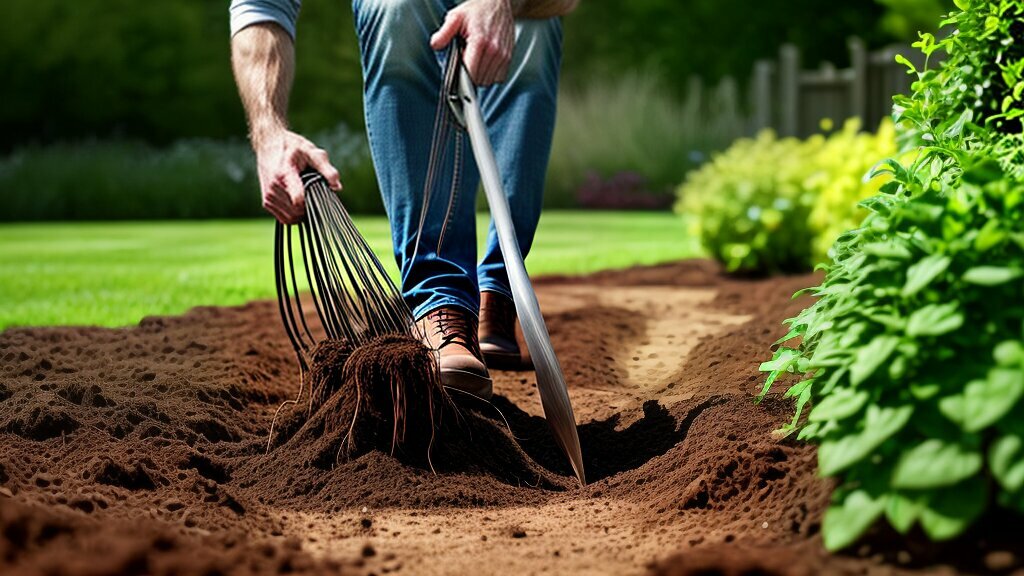
By following these tilling techniques, you can ensure that your garden is ready for planting and that your plants have the best chance of success. Happy gardening!
Conclusion
Congratulations on reaching the end of our guide to front and rear tine tillers! We hope you found it informative and helpful in making your decision on the best tiller for your garden needs.
Remember, whether you opt for a front or rear tine tiller largely depends on the size of your garden, soil type, and specific gardening tasks. Taking these factors into consideration will greatly improve your chances of achieving optimal results.
Reading tiller reviews can also provide valuable insights into the performance and reliability of different models, so don’t hesitate to do your research before making a purchase.
By choosing the right tiller and following proper tilling techniques, you can achieve a healthy and vibrant garden that will be the envy of your neighborhood. Happy gardening!

